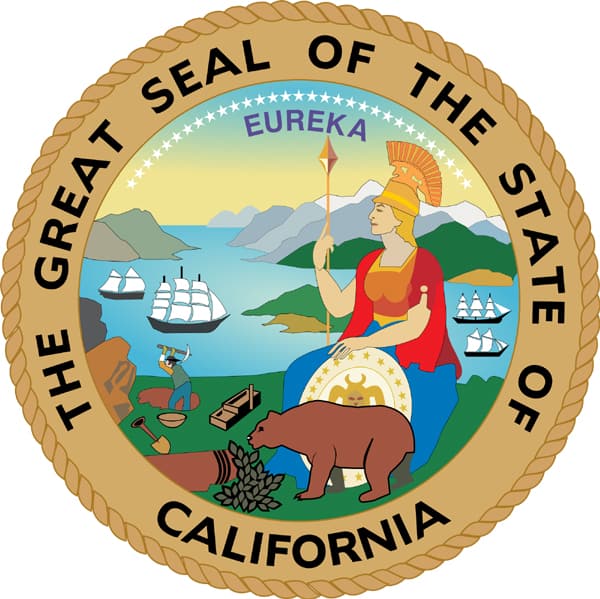Multi-State Petition against EPA Vehicle Standards Makes Weak Legal Case

 California, joined by 16 states and the District of Columbia, yesterday petitioned the D.C. Circuit Court of Appeals to stop Environmental Protection Agency Administrator Scott Pruitt from revising his predecessor’s greenhouse gas emission standards for new cars sold in 2022-2025. The coalition’s press release claims their “lawsuit is based on the fact that the EPA acted arbitrarily and capriciously, failed to follow its own regulations, and violated the Clean Air Act.”
California, joined by 16 states and the District of Columbia, yesterday petitioned the D.C. Circuit Court of Appeals to stop Environmental Protection Agency Administrator Scott Pruitt from revising his predecessor’s greenhouse gas emission standards for new cars sold in 2022-2025. The coalition’s press release claims their “lawsuit is based on the fact that the EPA acted arbitrarily and capriciously, failed to follow its own regulations, and violated the Clean Air Act.”
How so? The release asserts that the Trump administration “offered no evidence to support this decision [that the Obama standards are not appropriate] or its forthcoming rulemaking designed to weaken the existing 2022-2025 standards.” Read Pruitt’s decision and make up your own mind. He clearly offers plenty of evidence. The press release is rubbish and so is the lawsuit.
Let’s begin with the threshold legal question: Are these political grandstanders and virtue signalers even entitled to a day in court?
To be judicially reviewable, an EPA administrator’s policy decision must be a “final agency action.” Accordingly, the petitioners describe Pruitt’s decision to review and revise the 2022-2025 standards as appropriate through a new rulemaking as a “final action.” That does not pass the laugh test.
What attributes must an agency action have to be “final”? According to U.S. Legal.com:
Generally, two conditions must be satisfied for agency action to be final: First, the action must mark the “consummation” of the agency’s decision making process—it must not be of a merely tentative or interlocutory nature. And second, the action must be one by which “rights or obligations have been determined,” or from which “legal consequences will flow.” Nat’l Parks Conservation Ass’n v. United States Army Corps of Eng’rs, 446 F. Supp. 2d 1322, 1334 (S.D. Fla. 2006)
Pruitt’s reconsideration of his predecessor’s rulemaking, published last month in the Federal Register, does not have either of the requisite attributes of a final agency action. It is not a “consummation” but a decision to initiate at a future date a public notice and comment rulemaking to “further consider appropriate standards for MY 2022–2025 light-duty vehicles, as appropriate” (83 FR 16077). In addition, until the future “rulemaking has been completed, the current [Obama EPA] standards remain in effect and there is no change in the legal rights and obligations of any stakeholders” (83 FR 16087).
The petitioners know full well that Pruitt’s reconsideration is not a final action. They purport to be defending the 2012 Obama EPA/National Highway Traffic Safety Administration (NHTSA) rule making, which tentatively prescribed greenhouse gas and fuel economy standards for model years 2022-2025, subject to a Midterm Evaluation to be completed by April 1, 2018. The 2012 rule specifically states that if EPA decides the standards are appropriate, that “decision will be final agency action which also will be subject to judicial review on its merits.” However, if EPA decides the standards are not appropriate, the agency will engage in a joint rulemaking with NHTSA, and “Any final action taken by EPA at the end of that rulemaking is also judicially reviewable” (77 FR 62784-85).
Or, as Pruitt summarized in his reconsideration, which California et al. include as the sole attachment in their petition:
This Determination is not a final agency action. As EPA explained in the 2012 final rule establishing the MTE process, a determination to maintain the current standards would be a final agency action, but a determination that the standards are not appropriate would lead to the initiation of a rulemaking to adopt new standards, and it is the conclusion of that rulemaking that would constitute a final agency action and be judicially reviewable as such [83 FR 16078].
Petitioners would have a case if Pruitt actually revised the Obama standards, as that would affect the legal rights and obligations of the stakeholders. But, as noted above, there has been no change in rights or obligations because the “current standards remain in effect” until such time as they are revised in a future rulemaking. Only then will a court have anything to review.
Contrary to petitioners, there is nothing arbitrary and capricious about Pruitt’s decision to revise the Obama standards. Pruitt’s determination that the Obama 2022-2025 rules are not appropriate is based on considerable new information about fuel prices, projected vehicle costs, consumer preferences, and other relevant factors. Moreover, the notice of withdrawal is careful to summarize the viewpoints of experts who disagree with the agency’s assessments. It is a thoughtful and balanced document. It just doesn’t reach the conclusion California et al. prefer.
The irony, of course, is that it was the Obama EPA, in cahoots with the California Air Resources Board, that acted arbitrarily and capriciously when it finalized its Midterm Evaluation of the 2022-2025 motor vehicle greenhouse gas standards 14 months ahead of schedule, and defied its legal obligation to finalize those standards “concurrently with” NHTSA’s related fuel economy standards for the same years (77 FR 62628).
The Obama-era EPA’s rush to judgment was for the political purpose of confronting the incoming Trump administration with a regulatory fait accompli, and it produced an agenda-driven rather than evidence-based rulemaking. The Obama EPA told automakers in July 2016 that it would issue a draft Midterm Evaluation in mid-summer 2017 and finalize the evaluation by April 1, 2018. Ditching those plans without warning, EPA instead proposed its final evaluation on November 30, 2016. The agency allowed the public only 30 days (actually less due to the Christmas holiday season) to comment on the 268-page proposal and 719-page technical support document (TSD). Despite receiving more than 100,000 comments, EPA finalized the evaluation only two weeks after the comment period closed.
As my colleague Sam Kazman and I commented in our October 2017 comment letter in support of Pruitt’s reconsideration of EPA’s Midterm Evaluation: “Abandoning regular order in this manner was arbitrary, capricious, and an abuse of discretion. Stakeholders did not have adequate time to prepare detailed technical comments on the proposal and TSD, and the agency did not have adequate time to review all significant comments. Changing plans at the last minute constituted a lack of transparency at best and misrepresentation at worst.”
Moreover, the Obama EPA, aided and abetted by California, made a mockery of the so-called harmonized national vehicle program petitioners claim to be defending. As the Alliance of Automobile Manufacturers observed in a letter to former EPA administrator Gina McCarthy, EPA’s “early action” compelled NHTSA to choose between two unacceptable options: (1) produce an independent evaluation that “may be substantially different and not at all harmonized with EPA’s determination,” or (2) “align itself with EPA’s determination regardless of the existence of facts and analyses that would suggest the need for a different outcome.” Bottom line: “Either way, the process now bears no resemblance to the coordinated effort that was envisioned in the midterm evaluation.”
It’s bad enough that the federal government presumes to determine for all consumers the relative importance of fuel efficiency compared to other vehicle attributes such as affordability, size, safety, utility, comfort, and style. States should not have a say in determining such tradeoffs in what every reasonable person acknowledges should be a national market.
The nation’s fuel economy statute, the Energy Policy and Conservation Act, prohibits states from adopting or enforcing laws or regulations “related to” fuel economy. California’s greenhouse gas emission standards are strongly related to fuel economy standards, because carbon dioxide (CO2) constitutes 94.9 percent of vehicular GHG emissions, and “there is a single pool of technologies … that reduce fuel consumption and thereby CO2 emissions as well” (75 FR 25372).
If one were going to make any state a partner in setting mileage standards, it should not be California, because the Golden State’s lawmakers have virtually no accountability to voters whose jobs depend on the success of U.S. automobile companies. The top ten automobile producing states are Mississippi, Alabama, Kentucky, Missouri, Tennessee, Illinois, Texas, Indiana, Ohio, and Michigan. Of those, only President Obama’s adopted home state of Illinois is among the 17 suing Pruitt to retain the Obama EPA motor vehicle standards.